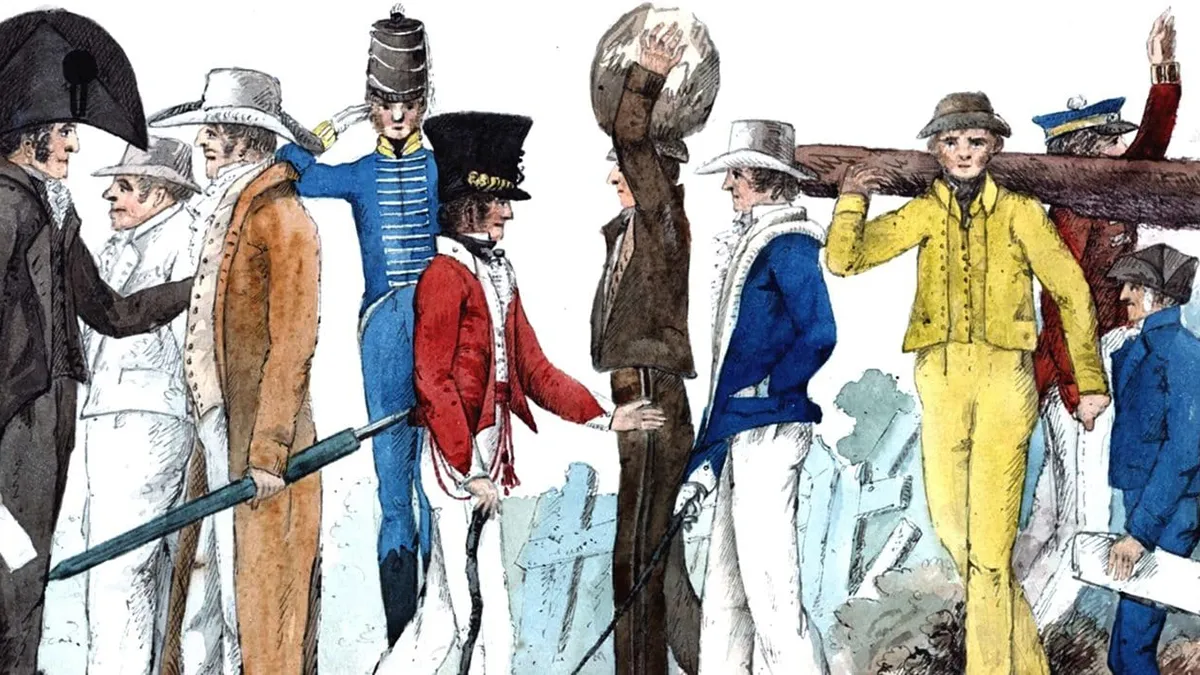Religion intrinsically requires a certain degree of willingness to suspend disbelief. That can cover a spectrum from openness to inspiration (literally, the “breathing in” of divine influence) to the most dangerous brainwashing that leads millennial cults to mass suicides on the word of a charismatic leader. In between there’s everything from simple faith to outrageous gullibility.
Gullibility is the working tool of hoaxers and scam-artists, so it shouldn’t be surprising that religious hoaxers have thrived for centuries.
Perhaps the most notorious religious (or anti-religious, being an attack on Judaism) is the Protocols of the Elders of Zion.
The Protocols of the Learned Elders of Zion is a book supposedly revealing a secret Jewish conspiracy to take over the world. It first appeared in Russia in 1905, and though the book has been completely discredited as a forgery, it is still in print and remains widely circulated.
Even today, the Protocols are still endorsed, even at times set as school textbooks, in many Middle Eastern countries.
Similar to the Protocols, the Monita Secreta, also known as the Secret Instructions of the Jesuits claims to be a similar instruction book for an alleged Jesuitical power plot. It’s now believed to be a forgery by a 17th century Polish friar who was expelled from the order.
Despite centuries of effort to fix the Biblical canon, apocryphal texts abound. These include non-canonical gospels, as well as texts like the Dead Sea Scrolls. In such fertile soil, Biblical forgeries abound.
These include the Epistle of Lentulus, supposedly written by Governor Publius Lentulus of Judea centuries before its publication, in the 15th century. It contains a physical description of Jesus.
For centuries, the churches did a roaring trade in holy relics, leading to the Lutheran barb that Jesus had 12 apostles – and 26 of them were buried in Germany alone. But the hunger for relics didn’t entirely die with the Reformation.
In 2002 an antiquities dealer in Israel claimed to have discovered a limestone ossuary (used to hold bones of the dead) with an inscription in Aramaic on one side of the box identifying its (missing) contents as those of “James, Son of Joseph, Brother of Jesus”. The find made international news because, if genuine, it might provide archaeological evidence for Jesus Christ […] In 2003 the Israeli Antiquities Authority published a report concluding that the inscription was a modern forgery carved on a genuinely old ossuary box.
One of the most famous “relics” in history is also judged – even by the Church – to be a fake, though that doesn’t stop millions from still believing.

Though many believe that Italy’s Shroud of Turin is the burial shroud of Jesus, there’s compelling evidence the shroud is in fact a hoax, including a 1389 letter from French Bishop Pierre d’Arcisto [to] Pope Clement stating that a painter confessed to creating it. Indeed, the Bishop’s evidence was so convincing that even Pope Clement acknowledged it as a forgery – one of countless faked religious relics circulating at the time. Carbon dating of the Shroud of Turin revealed it does not date back to the time of Christ but instead 14 centuries later – exactly when the forger confessed to making it.
Stephen Jay Gould has persuasively argued that the Piltdown Man hoax was perpetrated by Jesuit priest and paleontologist Teilhard de Chardin. Rather than a serious attempt to discredit evolutionary theory, Gould argues that the hoax was a prank by Chardin on his friend and colleague, fellow paleontologist Kenneth Oakley, which simply got out of hand. When the alleged discovery became a phenomenon, Gould believes, Chardin was simply too embarassed to come clean.
A kind of equal and opposite hoax was the Cardiff Giant.
When farm workers digging a well in Cardiff, NY, uncovered a fossilized man in 1869 they found something remarkable. The Cardiff Giant, as the figure became known, was a somewhat realistic figure with roughly human dimensions – except that it was nearly 10 feet tall […]
[Some] including a local reverend, were convinced it was proof of the literal truth of Biblical scripture, specifically Genesis 6:4 (“There were giants in the earth in those days” KJV). Here, finally, was one of those Biblical giants, discovered on a rural New York farm! It was in fact a clever hoax by a man named George Hull who had planted the carved stone where it would later be found by the farm hands, partly to prove the Bible literalists wrong.
Religious hoaxes are far from restricted to Christianity, though. Indian gurus and mystics have long specialised in apparently miraculous feats, from rope-climbing to the sword tricks so common in stage magic. In the 19th century, such magic tricks took the Victorian world by storm.
Although the tricks died out as anything but entertainment in the West, gurus are still pulling in awe-struck crowds.
One of the most influential spiritual leaders in India, Satya Sai Baba, died [in 2011] at the age of 84. For over five decades the charismatic guru enthralled and mystified followers by performing minor miracles, including producing holy ash, watches, statues, necklaces and rings seemingly out of thin air. However, skeptical investigators including Basava Premanand of the Federation of Indian Rationalist Associations accused Sai Baba of simple magicians’ tricks, and pointed out that all the objects were small and easily concealed in his hands and long-sleeved robes. In at least one case Sai Baba was caught on film by British investigator Professor Richard Wiseman secretly pulling small objects from his person while pretending they appeared out of nowhere.
Live Science
Lest moderns think themselves too clever and rational to be taken in by such obvious fakery, remember that millions of Americans are firmly convinced that police murder thousands of unarmed black men every year, and that men are able to give birth and have periods.









